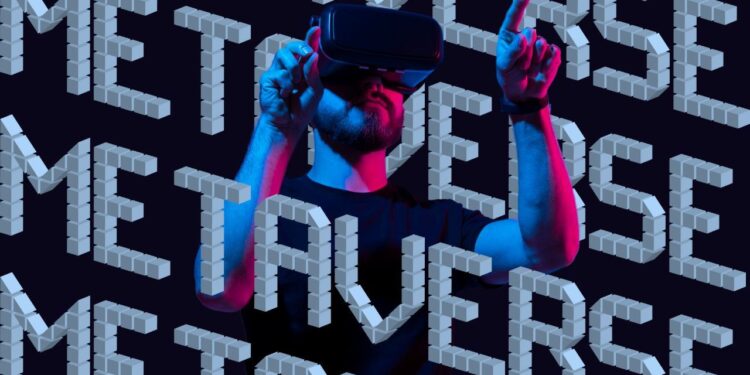- The metaverse is an expanding network of 3D virtual worlds that supports social interaction, transcending conventional VR and AR by allowing interoperability and consistent user identities across platforms.
- Major tech innovations like Apple’s Vision Pro and the widely accessible Meta Quest 2 are key to the metaverse’s adoption, offering entry points through enhanced user experience and affordable VR.
- While offering vast opportunities for innovation and reshaping various sectors, the metaverse raises critical challenges including privacy, data security, interoperability, and the digital divide that must be addressed as its integration into society deepens.
The metaverse has rapidly evolved from a sci-fi fantasy concept to a tangible digital frontier. This burgeoning ecosystem is where virtuality and reality merge, spearheaded largely by tech visionaries and cutting-edge innovations like Apple’s Vision Pro and the Oculus (Meta) Quest 2.
While it may still seem conceptual to most, the metaverse has the potential to redefine the essence of human interaction, work, and creativity.
What is the metaverse?
The metaverse is a collective virtual shared space, created by the convergence of virtually enhanced physical reality and physically persistent virtual spaces, including the sum of all virtual worlds, AR, and the Internet. It is an expansive network of 3D virtual worlds focused on social connection, where users can meet, work, and play — using avatars. Do not mistake this for a mere gaming platform or a singular virtual experience; the metaverse embodies a fully-fledged alternate digital universe that coexists with our own.
Differentiating the metaverse, virtual reality (VR), and augmented reality (AR)

Unlike traditional VR, which immerses users in a fully digital environment, or AR that overlays digital content onto the physical world, the metaverse stitches these technologies together into a seamless, interoperable domain. It promises to allow users to interact with a consistent identity across various platforms and real-world locations. Virtual reality is an intrinsic component of the metaverse, but is not synonymous with it.
Mark Zuckerberg and the metaverse mantra
The tech industry received a visionary jolt when Mark Zuckerberg, CEO of the then-named Facebook, heralded his company’s pivot towards this virtual phenomenon — even rebranding to Meta Platforms Inc. This announcement underlined a committed shift in focus from social media to the creation of an encompassing digital realm, highlighting the seriousness with which Silicon Valley views the metaverse’s potential.
Potential applications of the metaverse and implications across sectors
The implications of the metaverse are as diverse as they are profound.
In education, imagine immersive virtual classrooms that simulate real-life laboratories. In healthcare, consider the potential for remote surgeries performed by specialists halfway across the globe.
Real estate could see virtual property tours and transactions. Entertainment might find new expressions in fully interactive virtual concerts and events.
The business world could transform with virtual offices and conferences, creating a new model for collaboration and corporate presence.
Apple Vision Pro: A glimpse into the metaverse
Apple, known for its pioneering technologies, has launched Apple Vision Pro, which is a sophisticated AR/VR headset. Apple’s entrance into this technology could provide an intuitive and accessible entry point into the metaverse for a vast user base. The current cost of the headset doesn’t yet make it entirely accessible to the masses, but pricing on this tech should go down in time. Apple’s emphasis on design and user experience might well set new benchmarks for how users interact with virtual spaces, ushering in a wave of mainstream metaverse adoption.
The Oculus (Meta) Quest 2’s role in the metaverse
The Oculus Quest 2, now rebranded as the Meta Quest 2, has been instrumental in popularizing VR. Its key features — wireless freedom, intuitive controls, and high-resolution display — make it a leading device for experiencing the metaverse. Crucially, it does so at a price point that is accessible to a broad audience, which will be vital for widespread metaverse adoption.
Challenges and opportunities in the metaverse adoption
The road to the metaverse is paved with both excitement and uncertainty. Privacy concerns, data security, and potential for misuse loom as considerable challenges. Platform interoperability and digital divide are also significant hurdles that need to be addressed. On the flip side, the metaverse offers endless opportunities for innovation, new economic models, and previously unimagined ways of connecting and creating.
Preparing for the metaverse evolution
For individuals and businesses, the key to metaverse readiness lies in staying informed and adaptable. Businesses should consider investing in metaverse competencies and exploring virtual goods and services. Upskilling the workforce to navigate these virtual spaces could become an asset. Individuals can benefit from cultivating a blend of technical acumen and soft skills like digital etiquette that the metaverse will likely demand.
As the nexus of virtual realms and the future of work becomes stronger, the metaverse stands poised to reshape our digital landscape profoundly. It’s an evolution that promises to revolutionize the way we work, communicate, and unleash our creative potential in the years to come.


 Dr. Gleb Tsipursky – The Office Whisperer
Dr. Gleb Tsipursky – The Office Whisperer Nirit Cohen – WorkFutures
Nirit Cohen – WorkFutures Angela Howard – Culture Expert
Angela Howard – Culture Expert Drew Jones – Design & Innovation
Drew Jones – Design & Innovation Jonathan Price – CRE & Flex Expert
Jonathan Price – CRE & Flex Expert











